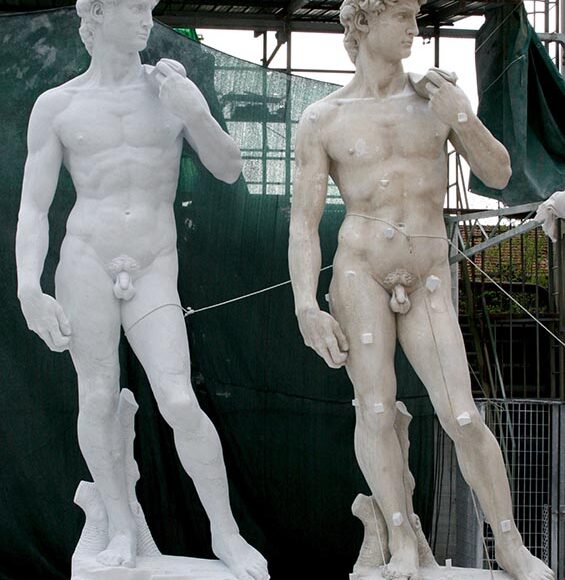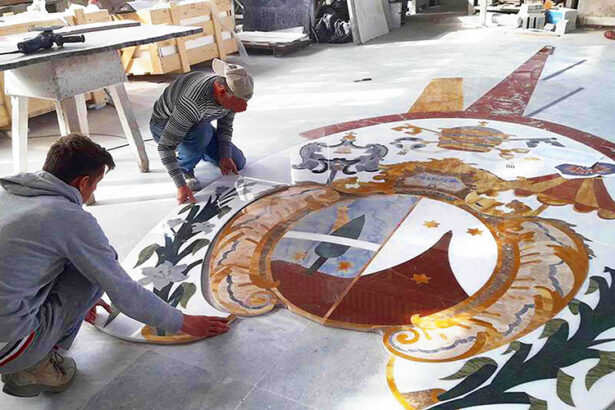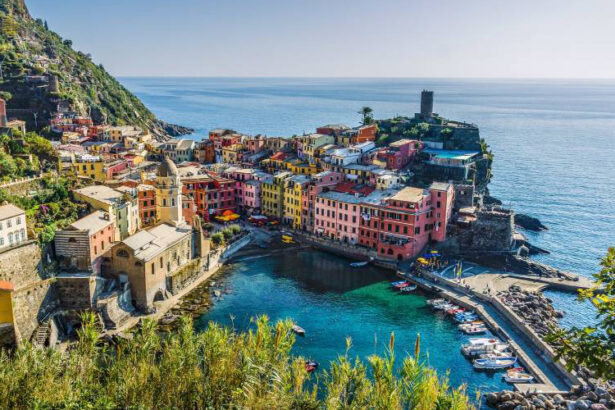The bond between Michelangelo Buonarroti and Carrara is one of the most fascinating stories of the Italian Renaissance. Among the Apuan Alps, the great artist found the perfect white marble to shape some of his most celebrated masterpieces. Visiting the Carrara marble quarries today means walking in the very places where Michelangelo chose the blocks for his David and the Pietà—a journey through history, art, and nature.
 The marble quarries loved by Michelangelo
The marble quarries loved by Michelangelo
In 1497, Michelangelo arrived in Carrara for the first time, commissioned by Cardinal Jean de Bilhères to find marble for his famous Pietà destined for St. Peter’s Basilica in Rome. From that moment, he developed a deep connection with the Apuan land. The artist personally visited the Torano quarries, selecting only the purest blocks, examining their veins and the way they reflected the sunlight.
Michelangelo was captivated by Carrara’s lunar landscape—majestic mountains carved by human hands, where the work of quarrymen meets the strength of nature. He collaborated directly with local workers, giving detailed instructions on how to cut and transport the blocks to Florence and Rome. Many of the ancient “vie di lizza” (stone-sliding paths) still visible today bear witness to that extraordinary era.
Michelangelo and the birth of Carrara’s marble myth
It was Michelangelo who made Carrara marble famous throughout Europe. He described it as “whiter than the moon,” praising its purity and strength—perfect qualities for sculpture. After him, other great artists such as Bernini, Canova and Thorvaldsen continued to choose Carrara as their source of inspiration and material for art.
The art of marble carving has never been interrupted. In Carrara’s sculpture workshops, techniques from the Renaissance are still practiced and taught today. This living heritage was officially recognized in 2018 when UNESCO included Carrara in the Creative Cities Network for Crafts and Folk Art, celebrating its artistic and cultural excellence.
 Visiting Michelangelo’s Carrara today
Visiting Michelangelo’s Carrara today
Today, visitors can explore Michelangelo’s places in Carrara through guided tours and curated itineraries. The Torano and Fantiscritti valleys offer spectacular views and insight into the extraction of marble used for sculpture since ancient times. In the sculpture studios, visitors can watch artisans working with the same traditional tools and precision techniques that inspired the Renaissance masters.
The historic center of Carrara still retains the charm of its medieval and Renaissance origins. The Cathedral of Sant’Andrea, Piazza Alberica and the Malaspina Castle tell the story of the “City of Marble.” You can also visit the house where Michelangelo stayed during his time in Carrara, and the locations featured in the film “Michelangelo – The Sin” (Il Peccato – Il furore di Michelangelo) directed by Andrei Konchalovsky. The filmmaker described the people of Carrara as “the true protagonists of my film,” alongside Michelangelo and the marble itself.
 Experience Michelangelo’s Carrara with Lunaetours
Experience Michelangelo’s Carrara with Lunaetours
With our private and group tours, you can experience a guided visit to Carrara’s marble quarries and Michelangelo’s landmarks, accompanied by expert local guides. Each itinerary can be customized according to your available time and interests, combining art, nature and culture in one unforgettable experience.
Book your tour now and discover the timeless bond between Michelangelo and Carrara: a journey through the quarries, history and passion that made the world fall in love with the pure white marble of the Apuan Alps.
FAQ about Michelangelo and Carrara
Did Michelangelo really visit the Carrara quarries?
Yes, Michelangelo visited Carrara several times between 1497 and 1520 to personally choose marble blocks for his most famous works, including the Pietà, Moses and the Slaves.
Which quarries are connected to Michelangelo?
Michelangelo mainly visited the Torano quarries, known then—as now—for producing the purest white marble of the Apuan Alps.
Can I visit Michelangelo’s places in Carrara today?
Yes, we organize guided tours of the historic quarries in the Torano Valley and the sculpture workshops where you can learn about marble carving tools and techniques.
How long does a tour of the Carrara marble quarries last?
On average, 2–3 hours. Half-day and full-day tours including workshops and tastings are also available.




